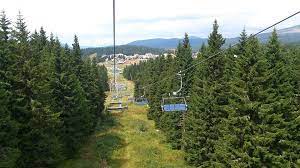Table of Contents
INTRODUCTION TO PANGARCHULLA PEAK:
Pangarchulla, situated at an altitude of 4,590M, offers an ideal experience for those seeking a taste of the high mountains at a relatively lower altitude. This peak presents a suitable level of challenge and breathtaking views, and is one of the few peaks in the Himalayas that challenges climbers with obstacles other than altitude. The surrounding giants, such as Nanda Devi, Kamet, Dhronagiri, Hathi Ghoda, Chowkhamba, Mana, and Neelkanth, contribute to the peak’s impressive and self-assured character.
The trail to Pangarchulla trek and Kauri Pass remains the same until the final day, and the drive to Dhak, the starting point for this incredible peak, offers a clear view of Nanda Devi on the left and Pangarchulla on the right. The trek is relatively short, lasting only 6 days, but provides a wide variety of terrain, from local towns to dusty trails leading to vast meadows, dense forests, pristine streams, and rocky patches that lead into snowy expanses. The trek also takes you past several historical and mountaineering landmarks, including many revered peaks.
OVERVIEW:
The best months to go on a Pangarchulla walk are April and May, when winter is less severe and you won’t freeze to death. The skies are clear to enjoy the peaks and scenery, and the weather is pleasant during the day.
The trek is made simpler in April when there is just the perfect amount of snow to cover the stones and fill any gaps with heavy snow that has fallen above 12,000 feet. As winter departs, spring also arrives, bringing with it blooming flowers, especially rhododendrons, and changing meadows with snowy paths in a variety of colours.
And if you hike during March and April, the woodland is coloured by blooming rhododendrons, adding to its already stunning beauty. You will enter a totally other universe while you are in Khullara.
Although Pangarchulla is not considered a technical peak, basic mountaineering abilities are more useful for navigating its varied terrain, steep grades, and diverse habitats. There is no need to be concerned, though, if you are unfamiliar with climbing gear and methods. The expedition will include all the essential gear and instruction because the organisation is learning-oriented. Nevertheless, it can be useful to be aware of potential obstacles along the way.
CHALLENGES OF PANGARCHULLA PEAK:
- The summit climb is the main attraction of this expedition and, for those who have accomplished it, its most unforgettable feature. The summit day is very long and requires cautious footing with each step since it involves going over several snow-covered boulders. You will come across difficult, exposed, and steep areas as you climb to higher heights, which heightens the sense of adventure. On the summit day, you will ascend and descend approximately 4,000 feet, reaching a height of 15,069 feet. These elements work together to make this voyage immensely thrilling and daring.
- The oddest characteristics of a mountain, such as steep ascents, expansive open spaces, highly bouldered routes, exposed ridges, intense snow, and a rapid and abrupt height gain on summit day, are all introduced to you by Pangarchulla Peak in the course of less than a week. An experiential lesson in the variety of high-altitude features is provided by a hike to the summit. The adventure remains thrilling as you negotiate the enormous snow rocks, brave the erratic weather in knee-deep snow, and hike down the trail’s steep slopes.
Every season at the summit has its own set of difficulties, which results in distinctive images and an entirely unique experience.
- Pangarchulla has a dichotomous personality, just like many trekking routes that are used throughout the year. The peak will take on a different appearance, strength, and attitude during the summer (March and April) and winter seasons (October through December). The summit will offer you new vistas, a different mood, and a different technique to climbing it in each season because it represents various challenges.
- When you are unintentionally free of interruptions like phone calls and text messages, it is comparatively simpler to stay focused on the task at hand. It takes a lot of concentration to climb a mountain; so much so that it is almost meditative. Furthermore, it is advantageous if you are in a remote area where you are automatically kept away from such distractions. None of those are the Pangarchulla Trail! It takes considerable resolve to keep your phones off so that you can get the most out of the mountain because there is strong reception almost the entire length of the trek. The connectivity also makes aid available whenever you might need it, but it might occasionally detract from the ascent a little.

